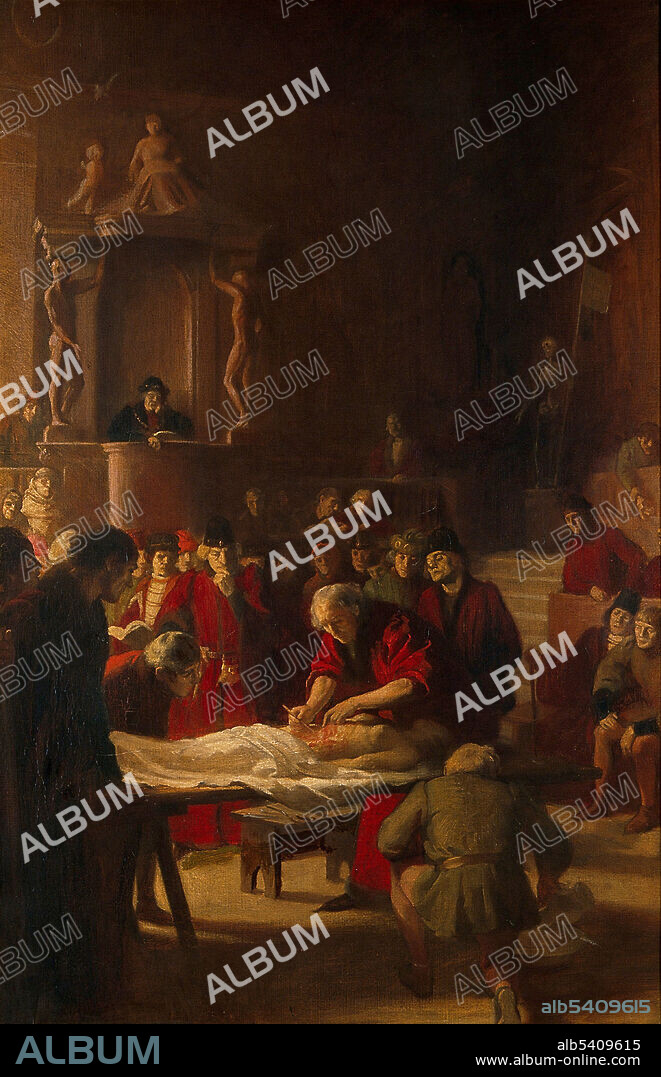alb5409615
Mondino de Luzzi, Italian Anatomist and Surgeon

|
Add to another lightbox |
|
Add to another lightbox |



Buy this image.
Select the use:

Title:
Mondino de Luzzi, Italian Anatomist and Surgeon
Caption:
Mondino de Luzzi, the Italian anatomist, making his first dissection in the anatomy theatre at Bologna, 1318. Mondino de Luzzi (1270 - 1326) was an Italian physician, anatomist, and professor of surgery. He was the first to incorporate a systematic study of anatomy and dissection into a medical curriculum. He performed his first public dissection in Bologna in January 1315 in the presence of medical students and other spectators. The proceedings were formally sanctioned by the Vatican, and the subject was mostly likely a female executed criminal. Mondino's teaching methods were unique because he often performed dissections in person and served the role of demonstrator himself, carefully studying the cadaver and incorporating this personal experience into his text and teaching. His major work, Anathomia corporis humani, written in 1316, is considered the first example of a modern dissection manual, the first true anatomical text and remained the most widely used anatomical text for 250 years. He died in 1326 at the age of 55 or 56. Oil painting by Ernest Board, undated.
Credit:
Album / Science Source / Wellcome Images
Releases:
Model: No - Property: No
Rights questions?
Rights questions?
Image size:
3001 x 4650 px | 39.9 MB
Print size:
25.4 x 39.4 cm | 10.0 x 15.5 in (300 dpi)
Keywords:
ANATOMY CLASS • ANATOMY • ART • AUTOPSY • BODY • CADAVER • CORPS • CORPSE • DEAD BODY • DISSECTING • DISSECTION • DISSECTION, MEDICAL • ERNEST BOARD • FIGURE • GROSS ANATOMY • HISTORICAL DOCTOR • HISTORY • ITALIA • ITALY • MAN • MEDICAL • MEDICINAL • MEDICINE • MEDIEVAL • MEN • MONDINO DE LIUZZI • MONDINO DE LUCCI • MONDINO DE LUZZI • MONDINO • MUNDINUS • OIL PAINT • OIL PAINTING • OIL PAINTINGC PIO DI SAVOIA • OLI PAINTING • POST-MORTEM • PROFESSOR OF SURGERY
 Pinterest
Pinterest Twitter
Twitter Facebook
Facebook Copy link
Copy link Email
Email
